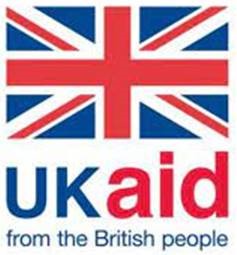Waiting for COVID-19 vaccines in Syria… for how long?
With the dramatic increase in global infections and deaths, many pharmaceutical companies have rushed to produce vaccines to prevent infection with COVID-19 virus. High-income countries have received the majority of vaccines, while low and middle-income countries found themselves isolated, with fewer options, while facing this terrifying pandemic. Recently, the COVAX initiative promised to supply Syria with sufficient quantities of vaccine to vaccinate 20% of the population. The COVAX initiative is a global initiative by international agencies including the World Health Organization (WHO), UNICEF, and GAVI, and aims to facilitate equitable access to COVID-19 vaccines around the world.
The Syrian regime agreed to join this initiative, represented by the Ministry of Health in Damascus, but at the same time stated that “the vaccine will not come at the expense of Syrian sovereignty,” indicating that it might prevent vaccines from being distributed in areas outside of regime control. This concern was highlighted by human rights organizations, as the regime could repeat previous scenarios of restricting distribution of humanitarian aid and use vaccine access as a new weapon of war.
This is particularly concerning, as the Damascus regime claims it will provide COVID-19 vaccination in ‘14 of Syria’s 15 provinces’ and the share of vaccines for Self-Administration areas in northeast Syria will be provided to Damascus. Damascus MOH, alongside WHO and UNICEF, will thus be responsible for distribution of vaccines in both regime-controlled areas and northeast Syria where it has no access.
Conflicting reports have come from regime-controlled areas about the arrival of doses of Russian or Chinese COVID-19 vaccines. However, there have not yet been official statements, clear policy, or priority setting by health authorities in Damascus. The lack of transparency, fear of political reprisals, and unknown distribution of these vaccines, which will only meet the needs of a small percentage of Syrians, makes the issue more complicated. Additionally, there are suggestions that those vaccines might be part of an Israeli agreement with the regime in exchange for prisoners1 or resulting from some unannounced grant from China.
In Northwest Syria, the situation is somewhat different. Although there are clear policies, and a specific mechanism for introducing vaccines through Bab al-Hawa crossing and distributing them to the Syria Immunisation Group in coordination with UNICEF, the arrival time for the first 3% of doses or subsequent 17% of doses is unknown.
About 224,000 doses are expected to arrive in early May, although the date has not been confirmed. NWS is scheduled to receive the AstraZeneca vaccine, as COVAX can only support vaccines within the normal cold-chain refrigeration range of +2°C to +8°C, unlike vaccines such as Pfizer or Moderna that require ultralow cold-chain temperatures. Vaccination will not be compulsory, based on recommendations of the health authorities. As with all COVAX support, priority target groups will be frontline health-workers, the elderly, and people with chronic comorbidities, due to the limited number of available doses. It is to be given in two doses, 8 to 12 weeks apart.
It is worth noting that some Syrians still doubt the effectiveness and safety of the vaccine, while some people have shown a strong hesitancy to receive the vaccine, believing in conspiracy theories and that the vaccine will increase the spread of disease, especially with a health system exhausted by conflict. Unfortunately, some of these people are health-workers. This raises concerns about the general acceptance of the vaccine, and in the absence of accurate data about this among Syrian communities, a suggested mitigation strategy is social mobilisaton about the vaccine to ensure community acceptance to achieve the safety of everyone and hopefully COVAX funding can contribute towards this for at least the initial 20% of the population that will be initially targeted.
The Syrian Response Coordinators team implemented a questionnaire in northwest Syria, to examine community acceptance of receiving the COVID-19 vaccine when it is available. The number of participants in the questionnaire was 14,731 people, of whom 44% were males and 56% were females. Results indicated that approximately 72% would be willing to receive the vaccine as soon as it is available, while 18% did not want to take the vaccine, and the remaining 10% were not sure of their decision. Regarding concerns about receiving the vaccine, 49% expressed their concerns clearly, 28% said that they have some level of concerns, while 23% confirmed they have no fears of the vaccine. Although these results seem promising, they show some doubts among the Syrian people regarding this vaccine, which needs to be addressed before implementing vaccination campaigns.
In conclusion, we insist on the fact that ending the COVID-19 pandemic is an international responsibility and this can only occur if Syrians in all areas of control inside Syria are able to access vaccines.
Written by Northwest Syria Research Team (NWS-RT)


